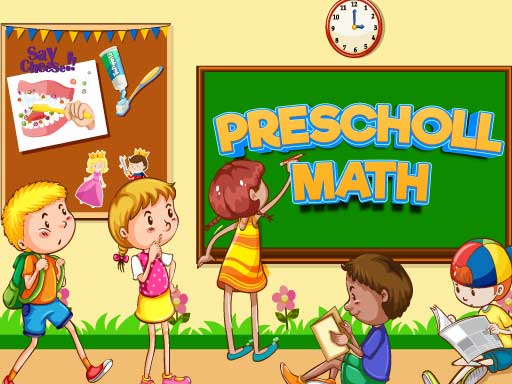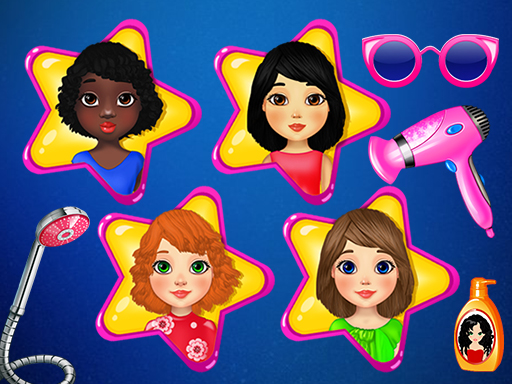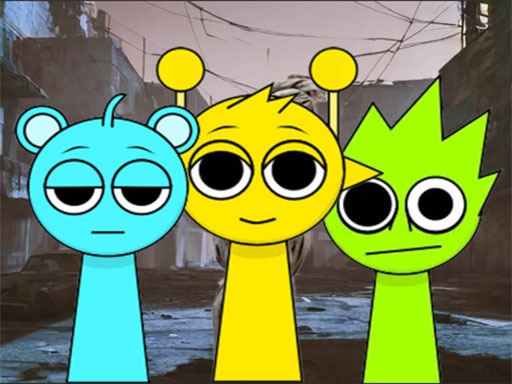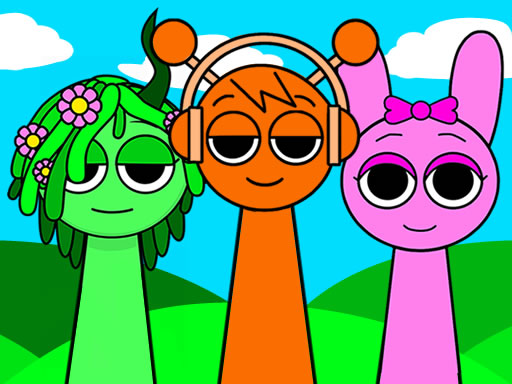
🎮 Introduction: Making Math Fun Again
For many children, math can feel intimidating. Numbers, symbols, and formulas sometimes create frustration instead of understanding. But what if math could be fun, interactive, and part of an exciting game?
This is the goal of a new educational experience that transforms traditional learning into joyful play. The game engages young minds by helping them practice essential math skills like counting, addition, subtraction, and shape recognition—all through simple tap or click actions.
By turning abstract concepts into visual, touchable challenges, the game supports a child’s curiosity and natural problem-solving instincts. Whether they’re using a PC or mobile device, kids learn by doing—making mistakes, correcting them, and gaining confidence along the way.
This isn’t just about getting the right answers; it’s about building a lifelong appreciation for numbers and patterns. With colorful visuals and responsive gameplay, math becomes something kids look forward to.
🧮 Math Made Interactive: Tap, Learn, Solve
The game’s mechanics are brilliantly simple. On PC, a right mouse click selects the correct answer to the math question shown. On mobile, a single tap does the trick. This approach makes learning frictionless.
Each challenge appears on the screen with a variety of possible answers—some right, some deliberately tricky. Children must stay focused, process the problem quickly, and choose the right one. The instant feedback loop keeps the pace fast and the player engaged.
Interactivity is the secret sauce here. When children physically interact with content—clicking, tapping, swiping—they retain more information. This kinesthetic connection to learning can often be more impactful than static worksheets or videos.
Instead of memorizing, players are solving. And that subtle shift is what transforms math from a chore into a game they want to win.
➕ Counting and Addition: Building the Basics
Every great mathematician starts with the same building blocks—counting and simple addition. This game offers colorful, clearly illustrated exercises that help players visualize numbers and quantities.
Kids begin by counting objects on the screen. The game then asks how many there are or prompts a basic equation like “3 + 2 = ?” with multiple-choice answers.
What makes this method effective is the connection between visual quantity and numerical symbols. For example, when a child sees three apples and two more appear, then taps “5,” they aren’t just answering a question—they’re developing number sense.
Addition becomes second nature when children engage with it through patterns, repetition, and fast-paced fun. The game doesn’t just teach them to add; it teaches them why numbers work the way they do.
And the sense of achievement after each correct answer fuels motivation to move forward—learning more complex skills as they go.
➖ Subtraction as Discovery, Not Confusion
Subtraction often trips up learners because it’s the opposite of the natural direction in which they learn to count. But this game handles subtraction through visual storytelling and hands-on problem-solving.
Imagine seeing six stars on the screen. Then, two vanish. A question pops up: “How many are left?” With just a quick click or tap, the answer is selected, and the lesson is learned.
This method frames subtraction as a story—a change in quantity, not a math puzzle. It becomes a question of noticing and understanding, rather than memorizing rules.
Each subtraction challenge builds on the last, and players get immediate feedback. Correct answers earn encouraging sounds and bright animations, while incorrect answers prompt gentle repetition—never punishment.
By guiding children through subtraction in this way, the game helps them build confidence in what is often a difficult topic. They discover that taking away doesn’t have to feel negative—it can feel like progress.
🔷 Shapes and Spatial Awareness: Visual Math in Action
Beyond numbers, the game also introduces geometric concepts—shapes, patterns, and spatial awareness. These skills are crucial for cognitive development and are often overlooked in basic math instruction.
Players are asked to identify triangles, circles, squares, and more. Sometimes the game challenges them to complete a pattern or choose the shape that doesn’t belong.
These tasks do more than build geometry skills; they improve observation, logic, and visual processing. Understanding shapes also lays a foundation for more advanced topics like symmetry, measurement, and even algebra later on.
By wrapping these lessons into engaging visuals and challenges, the game ensures kids learn not just how to count, but how to see the math around them.
These early experiences make a lasting impact. They turn shapes into tools for thinking, rather than just forms on a page.
🧩 Progression and Challenge: Growing with the Game
As players improve, the game adjusts to their level. What starts with simple equations and shapes gradually becomes more complex.
Children encounter multiple-step addition, missing-number puzzles, or combinations of shape and number problems. The pace increases, and so does the need for focus and accuracy.
This kind of adaptive challenge keeps kids in the “learning zone”—not too easy to be boring, but not so hard that it’s frustrating. They feel challenged, not overwhelmed.
Each level passed brings a small win. This builds a growth mindset: the belief that effort and persistence lead to success. Kids start to enjoy the feeling of solving something hard, and that feeling becomes its own reward.
It’s a loop of learning and leveling up that mimics the best parts of gameplay while delivering real educational value.
🧠 Boosting Brain Development with Every Click
Every time a child solves a math problem in this game, their brain is doing more than just finding the right answer. It’s strengthening memory, improving logical thinking, and training focus.
These skills are essential not just for math but for life. The ability to spot patterns, concentrate, and work through problems is useful in reading, science, and everyday decision-making.
And because the game is hands-on, it also supports hand-eye coordination and fine motor skills—especially on mobile devices. Kids learn to react, move, and think in sync.
It’s not about creating a math genius overnight. It’s about giving the brain a workout, every day, in a way that feels fun and natural.
📱 Designed for All Devices, Anytime, Anywhere
Whether kids are on a PC at home or a tablet in the car, the game runs smoothly. Its simple controls make it accessible, and the mobile-friendly interface ensures learning is never far away.
There’s no need to install anything complicated or buy expensive equipment. Just open the game, tap or click, and start learning.
This kind of flexibility is essential for modern families. Whether it’s five minutes before dinner or half an hour during screen time, the game fits into any routine.
And because the experience is consistent across platforms, children can switch from desktop to mobile without skipping a beat. The design supports both solo play and collaborative learning with siblings or parents.
🌟 Confidence Through Success
One of the most powerful things this game offers is a steady stream of small victories. Each correct answer is a moment of triumph. Each new level reached is proof of progress.
Over time, these moments add up. Children begin to approach math with confidence instead of hesitation. They trust themselves to figure things out, even if it takes a try or two.
This confidence spills into other areas of learning. When kids believe they can solve math problems, they start to believe they can solve other challenges too.
The game encourages this growth gently, without pressure. There are no harsh penalties for mistakes—only chances to try again and get better.
This is where real learning happens—not just in knowing facts, but in believing, “I can do this.”
🏁 The Journey of Learning Never Ends
Even when a child has mastered basic addition or shape recognition, the journey doesn’t stop. The game can be played again and again, each time with a new level of speed, accuracy, or depth.
The replay value means kids don’t just move on—they build layers of understanding. A second playthrough might mean faster solving, more confidence, or exploring new strategies.
And as children grow, they can revisit the game to refresh skills or prepare for school tests. It becomes more than entertainment—it becomes a trusted learning tool they can return to.
In the end, the game doesn’t just teach math—it builds a mindset of curiosity, resilience, and joy in learning.
📚 Final Thoughts: A Smart Start to a Bright Future
There’s no shortcut to mastering math, but there are better paths to getting there—and this game is one of them. With engaging visuals, simple mechanics, and rich educational value, it invites kids to love learning.
By combining problem-solving with play, it lays the groundwork for a future where numbers aren’t feared—they’re welcomed.
This game is more than an app. It’s a gateway to understanding, one click or tap at a time.






